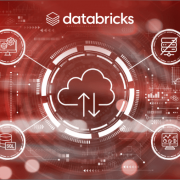As an organization’s D&A landscape grows with time in terms of size and complexity, redundancy is inevitable. This makes it imperative to rationalize users, data, analytic reports and applications from time to time. In addition, there could other business drivers such as mergers and acquisitions often calling for consolidation of tools and migration to more modern platforms. The other key driver is the need to stay abreast with the new capabilities made possible by tectonic technological shifts and evolving customer expectations within the constraints of stringent regulations.
Rationalization Approach:
Rationalization of any D&A landscape should be built upon the key pillars of automation, governance, and communication – with an agile mindset to execution. We have listed below four key steps which provide a perspective on how you should plan and execute such a rationalization program:
- Analyze Objectives and Need: Figure out business objectives and drivers for the need to rationalize. Also understanding the key stakeholders involved and their willingness to help with the impending bigger change (e.g.: cloud migration), which rationalization may be a part of.
- Create a Holistic Plan: Create an inventory of key parameters like data volume and number of users. Outline an initial project plan which includes associated timelines, costs, and resource planning. This is where you need to decide whether to outsource the task to a trusted partner or if it makes sense to do it internally by developing, nurturing, and sustaining the needed skills in the organization.
- Formulate a Roadmap: There is no silver bullet when it comes to creating a roadmap as every enterprise, its drivers, and constraints are different. However, leveraging some building blocks can help you accelerate the process without re-inventing the wheel.
- Automate as Many Steps as Possible: Automate the Identification of patterns from data to determine the business rules for rationalization (e.g.: “ignore all reports not run in last 6 months”). Modern accelerators like Infocepts BI Converter can help with automated metadata analysis and identify candidates for rationalization.
Critical Success Factors:
There are several critical success factors do help enterprises ensure a successful D&A application rationalization. Listing the top two below –
- Well-Planned Timeline: Planning an analytics rationalization project involves working backwards from the larger deadline, whether its cloud migration cut-over date or closure of acquisition. Putting in adequate buffers for business users for seasonal and annual peak workloads (like budgeting, Black Friday campaigns) also helps in ensuring a smooth sailing.
- Stakeholder Alignment: It is important to ensure the availability and alignment of the concerned stakeholders, especially the business users. Their involvement as well as inputs are vital for the program success and often needs context-setting and discussions prior to kickstarting such programs.
Infocepts helps customers rationalize and migrate their databases, data pipelines, or analytics tools using a repeatable approach to achieve the desired state quickly and efficiently. We apply best practices, solution accelerators, and cross-functional experts to deliver predictable results and operational flexibility—all while avoiding unnecessary costs and hassles.
Check out our Advisory Note to learn more about all the essential steps and critical success factors to guide your success in D&A platform modernization initiatives
Recent Blogs

What Retail Media Can Learn from Instacart’s AI Strategy
June 24, 2025

Beyond Chatbots: How Agentic AI Is Automating High-Stakes Business Decisions
June 11, 2025

From Batch to Real-Time: The Future of Data Distribution Using Databricks Delta Sharing
June 4, 2025

Accelerating Databricks Serverless Adoption with Agentic AI & Proven Practices
May 29, 2025


